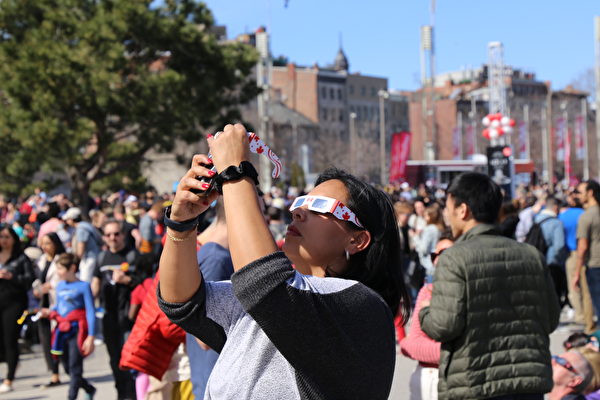After the total solar eclipse on Monday afternoon, April 8th, the search volume related to “eye pain” surged on Google. The search results indicated that some people along the path of the total eclipse were worried that they had been looking at it for too long.
According to NBC, eye specialists stated that this worry was reasonable. Viewing the sun without protective gear could potentially harm one’s vision. However, eye pain is not the best indicator of visual impairment: damage caused by solar retinopathy does not necessarily result in immediate pain.
Staring directly at the sun can cause two main types of damage: burns on the surface of the eye and damage to internal nerve tissues.
“Your cornea might get burnt, leading to redness, tearing, and other symptoms, which should resolve on its own in a day or two without causing any permanent damage,” said Dr. Daniel Lattin, an ophthalmologist at Nemours Children’s Health in Jacksonville, Florida.
Dr. Russell Van Gelder, a retinal specialist at the Karalis Johnson Retina Center at the University of Washington School of Medicine in Seattle, mentioned that this type of injury is rare and more commonly seen in mountaineers who spend extended periods at high altitudes without proper eye protection.
Experts emphasized that symptoms related to vision should be closely monitored.
Dr. Luxme Hariharan, the director of pediatric ophthalmology at Dayton Children’s Hospital in Ohio, mentioned, “If you experience blind spots, wavy lines, floaters, or blurred vision in the aftermath of the eclipse, it could be solar retinopathy and requires immediate medical attention.”
Dr. Hariharan explained that symptoms of solar retinopathy typically appear within 24 hours of sun exposure and are not associated with pain.
Dr. Lattin noted that solar retinopathy is untreatable, but some patients may see gradual improvement over time.
Reports from USA Today suggested that eye pain could indicate eye strain, and even with the recommended ISO glasses from organizations like the American Astronomical Society for safe eclipse viewing, this condition could still occur.
Cases of long-term damage following eclipse viewing are rare. As per a report by the American Astronomical Society after the 2017 total eclipse, out of an estimated 150 million viewers, only around 100 patients reported “eclipse-related retinal damage.” The report, based on informal survey data, indicated that children and teenagers were most likely affected.
Experts warned that staring at the sun could quickly harm the eyes.
Dr. Hariharan emphasized, “If you watch it without protection, without glasses, it may only take a second or two. The issue is when the moon completely blocks it, and if it’s cloudy, people may think it’s safe to stare at it and end up doing so for longer.”

